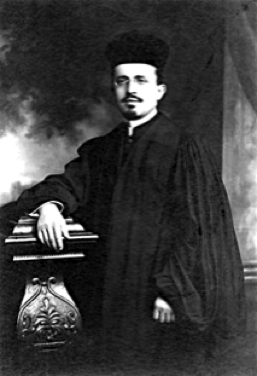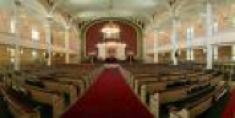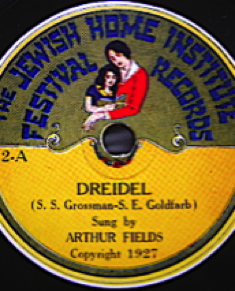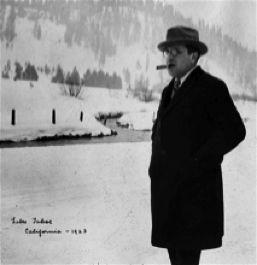More Family History


Where we lived:
1910: Ridge Street (Lower E. Side)
1910: 75 Sheriff (Lower E. Side)
1920: 325 East 4th St, NYC
1930’s: 87 Lee Avenue, Brooklyn
1940’s: 188 Keap Street,Brooklyn;
Staten Island; Sea Gate
Highmount, NY: Family vacation home, nickname: “Brierly”


Israel Goldfarb (1879-1967) Rabbi, Cantor and Influential Composer
By Rabbi Henry D. Michelman
Born in Sieniewa, Galicia, Poland, Israel Goldfarb came to New York at the age of 14 and within a decade graduated from Columbia University. He was ordained by the Jewish Theological Seminary in New York (1902), in the distinguished first graduating class of Solomon Schecter. He received his musical training at the Institute for Musical Arts, the forerunner of the Juilliard School of Music.
Israel Goldfarb was Rabbi and cantor/composer of Congregation Baith Israel Anshe Emes, founded in 1856, now known as the Kane Street Synagogue, the oldest continuing congregation in Brooklyn, New York. From 1905 to 1956 when he was named rabbi emeritus, he introduced his music as he composed it at liturgical services. He died knowing that his grandson, Rabbi Henry D. Michelman, was to be named his successor. He came to a congregation that had just completed a merger of German/Jewish immigrants (Baith Israel) and Eastern European immigrants (Anshe Emes) that was moving to new quarters in a converted church on Kane Street. His music helped to unite divergent parts of the congregation and eased the many transitions.
Goldfarb was often called “the father of congregational singing” because in those earlier years the idea of congregants singing in an organized fashion was not popular nor accepted in many traditional synagogues. Generally, cantors did not create and introduce melodies into the liturgical service for all to sing. The vogue was cantors and professional choirs. He formed a young people’s choir, men and women, which served a social and a religious function under synagogue auspices.
In 1907 Rabbi Goldfarb introduced choral music into his synagogue with Meyer Machtenberg, the well-known synagogue choral conductor leading the choir. Machtenberg stated that Goldfarb was familiar with the difficulties posed by the choirs of the day, and knew the increased demands made by the new school of professionally trained musicians. He felt strongly about congregational participation in the services through singing. He composed music that untrained worshipers could learn easily and enjoy singing in synagogue and at home.
His congregation was called the “mother synagogue of Brooklyn” because generations of members went forth from Kane Street to create congregations in other communities in Brooklyn. They took with them the Goldfarb music and the traditions of congregational singing. Rabbi Goldfarb brought his congregation into the Conservative movement, and it became one of the founding members of the United Synagogue of America.
As early as 1919 and throughout the 1920's, after conducting services in his synagogue and presiding over his own Shabbat table, Israel Goldfarb often walked over the Brooklyn Bridge on Friday nights to the Oneg Shabbat at the newly formed Young Israel, housed in the Educational Alliance building on the Lower East Side of Manhattan. He brought with him his melodies. And then he walked back to Brooklyn, so that on Shabbat morning he would be back in his own shul. His brothers – Joseph, Saul, Benjamin, and Samuel – also were active in the Young Israel movement in those early years. They, too, served often as lay cantors in synagogues, infusing Young Israel and other congregations with the kinds of melody-making and singing that were to become models for subsequent generations. Goldfarb first cousins – the Speros, the Hoenigs, the Rhines – legendary families in the Young Israel Movement, also were accomplished singers who helped to strengthen the then fledgling Young Israel movement’s commitment to congregational singing, a practice not popular in the 19th century or in the early part of the 20th century.
He composed the world famous melody for the sabbath evening hymn “Shalom Aleichem” in 1918. It was copyrighted and published for the first time later that year in his “Friday Evening Melodies.” Its popularity, along with his music for “Magen Avot,” “Va Y’chulu,” “Alenu,” “Av Horachmim,” “Zachreinu l’Chayim,” “Mi Chomochah,” “Yimloch Adonoi,” “B’Sefer Chayyim,” and “V’al Kullom” spread so rapidly throughout the world that “many came to believe this music was handed down from Mount Sinai by Moses,” Goldfarb said.
He was the composer of many of the melodies for the Sabbath, Festivals and High Holy Days synagogue services. They are so universally sung that most believe they are “traditional.” Tens of thousands of The Jewish Songster (1919), and Song and Praise for Sabbath Eve (1920) were used in synagogues and schools throughout the country. They contained songs which were easy to sing and appealed to a new generation of American Jews.
Israel Goldfarb taught “Hazzanut,” the Cantorial Arts, at the Jewish Theological Seminary for decades before the establishment of its cantorial school. He developed a curriculum for training cantors for Hebrew Union College and the Jewish Theological Seminary.
Henry D. Michelman, the grandson of Rabbi Israel Goldfarb, served as rabbi of Kane Street Synagogue from 1967 to 1971. This article was written for the “Encyclopedia Judaica”
Israel Goldfarb, JTS Class of 1902
Samuel Goldfarb
Kane Street Synagogue, Brooklyn